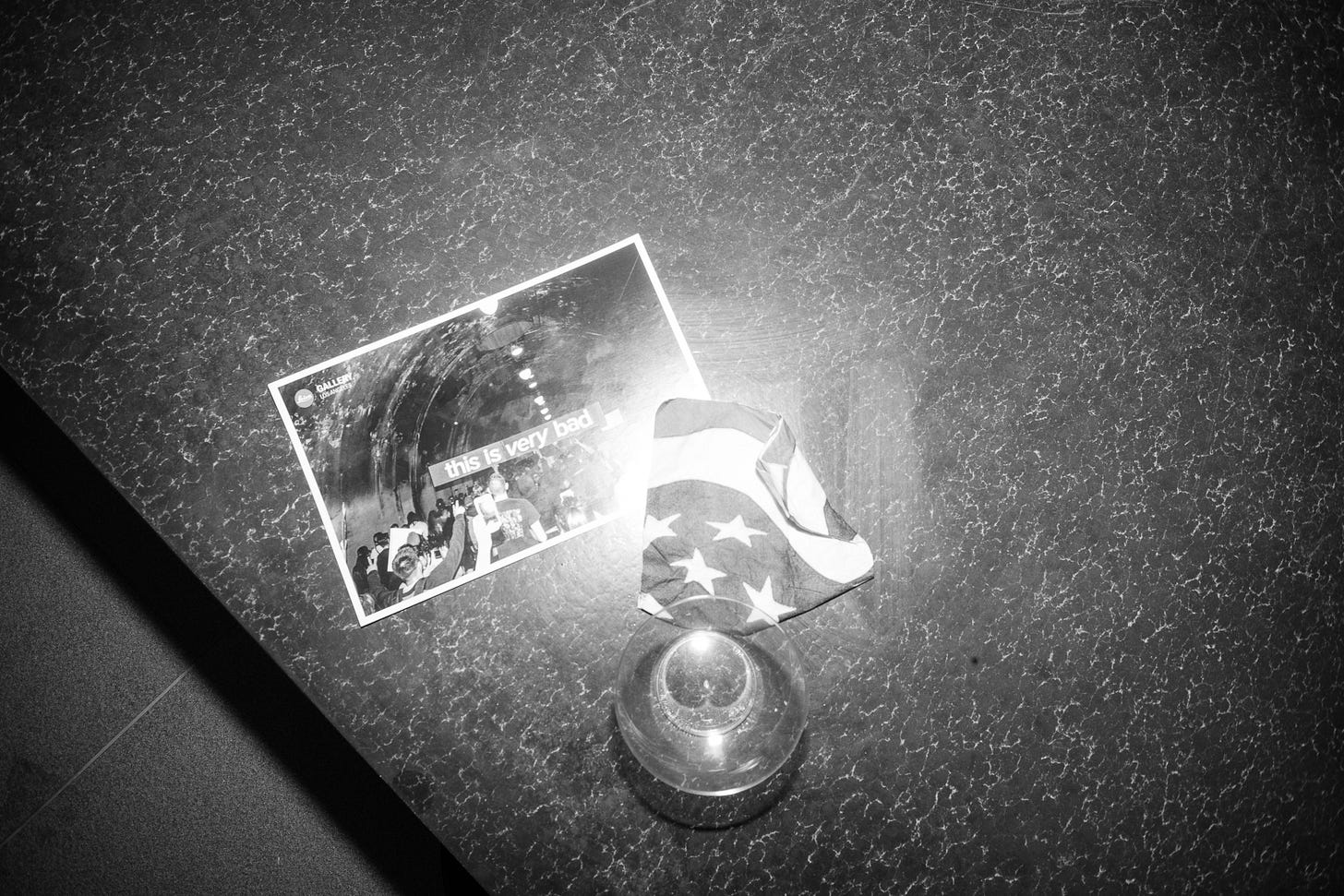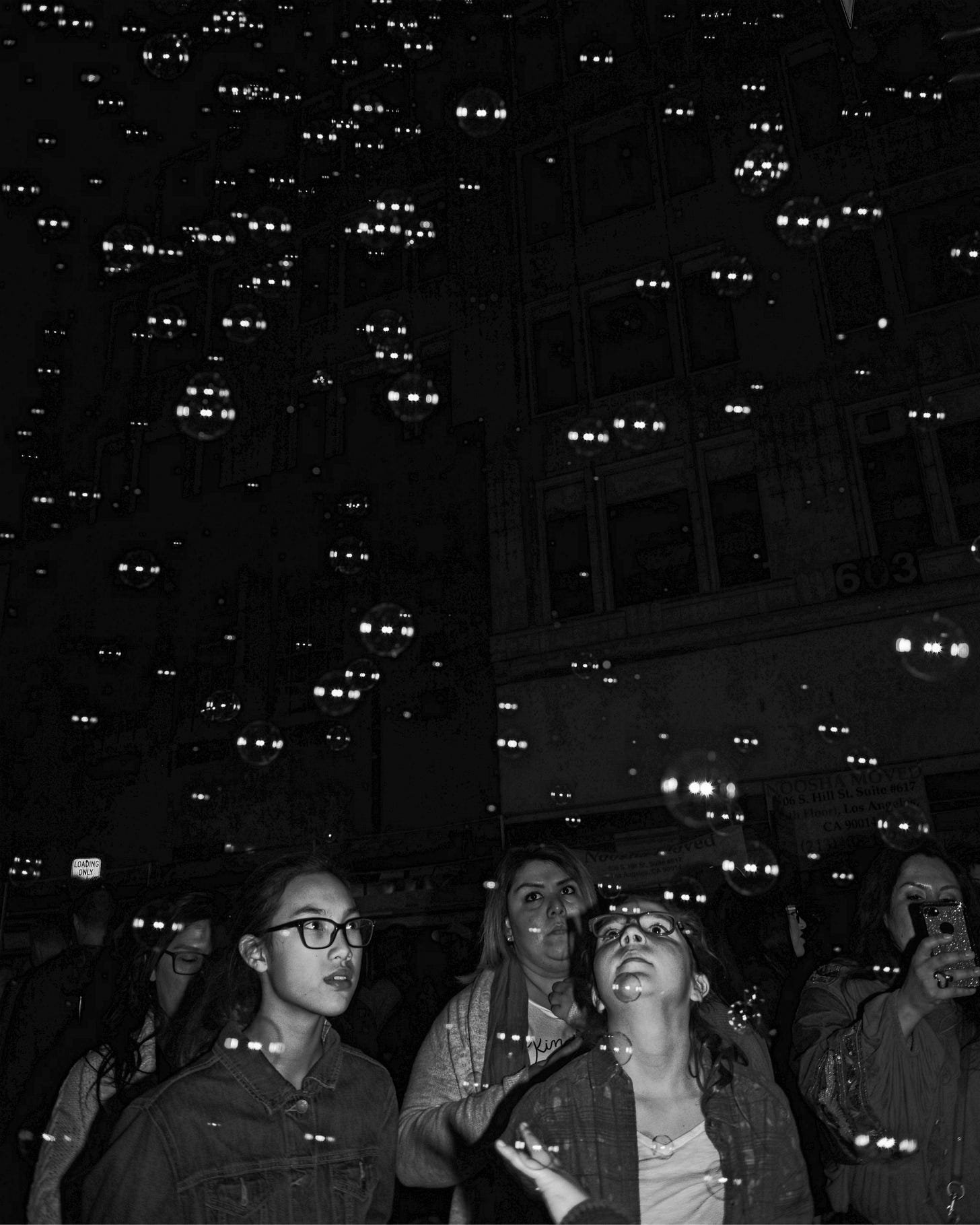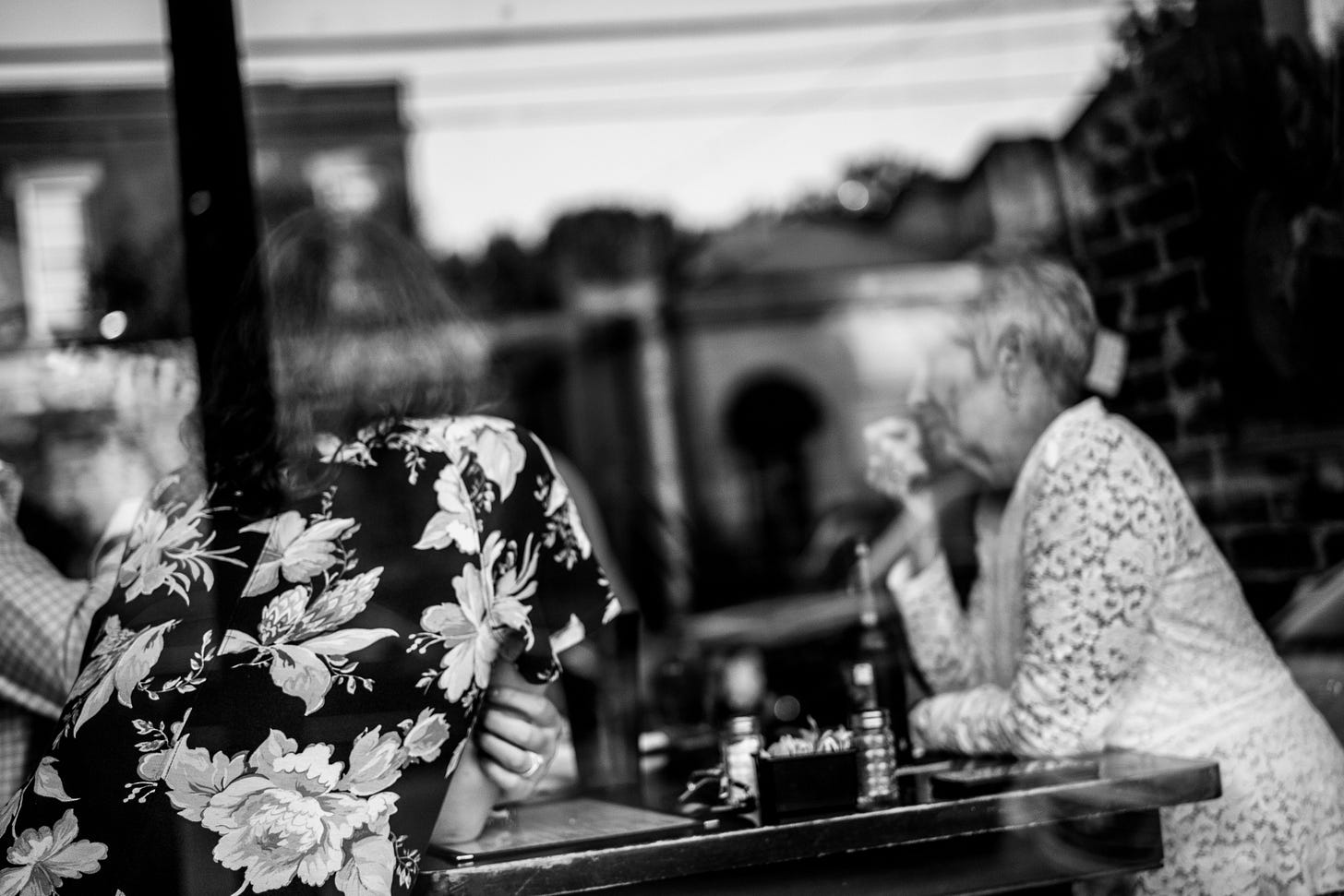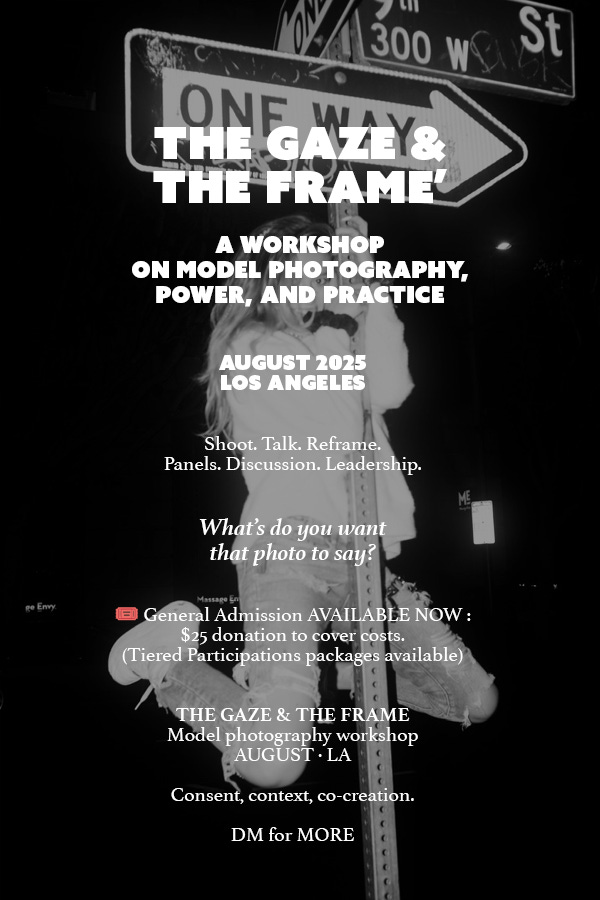FINAL CODA: Against Visual Language — Toward the Illegible Image
I did a series on The Image In Crisis. The last one comes out tomorrow. I wrote this after.
“Sontag called photography a ‘grammar’ of looking—but a grammar is rigid. Coded. It limits what can be said. Barthes wants puncture. She wants analysis. He wants to be undone.”
(from The Image In Crisis, Essay III)
In 2025, we are told that we speak in visual language.
That our images should be coherent. Shareable. Optimized.
That our photos should tell stories. Deliver value. Convey brand essence.
Make sense.
But photographs are not language.
Not really.
At least not the ones I care about.
Language is built on clarity.
Photography—real photography—is built on the rupture of clarity.
A photograph is not a sentence.
It is a wound.
A prayer.
A riddle.
A leak.
What We’ve Lost
From Sontag, we’ve lost the moral edge—the suspicion that beauty might be disguising harm.
From Barthes, we’ve lost the capacity to be undone by an image. The punctum. The little wound that hurts more because it has no clear cause.
From both, we’ve inherited nothing but language games.
And in their place, we built a culture of clean, conforming, branded image fluency.
Visual language in 2025 means:
The polished protest image.
The trauma reel with trending audio.
The “authentic” photo dump that’s been edited 19 times.
The sleek, legible, safe simulation of presence.
The result?
No friction.
No stutter.
No grief.
Just scrollable ghosts.
My Refusal
I don’t make photographs to explain myself.
I don’t make photographs to illustrate a moodboard.
I make photographs to disrupt grammar.
I make images that blur.
That ache.
That whisper and collapse.
That contradict the expectation of “cohesive visual identity.”
I shoot through Mylar, not just to distort the face—but to reflect the fracture inside it.
I photograph eroticism and power, not to provoke—but to hold the unspeakable.
I step into the wound of the moment and let it mark the frame.
These are not legible images.
They are elegies.
They are haiku.
They are spells.
The Illegible Image
We don’t need more visual language.
We need more illegible images. Not that they aren’t clear, but the meaning is fluid.
We need images that stutter or scatter.
That break the scroll.
That do not perform meaning—but resist it.
That carry grief like fog.
That refuse the safety of being “understood.”
We need photos that feel like they were never meant to survive the algorithm.
Images that look back at you and say,
You weren’t supposed to see this.
But now that you have—don’t forget me.
Photography Is Not an AI Language. It’s A Mourning.
The photograph isn’t here to help you speak.
It’s here to help you remember what cannot be spoken.
Not grammar.
Not marketing.
Not content.
But something older.
Something sacred.
The ghost in the frame.
The face of your mother.
The blur in a lover’s shoulder.
The gesture that looks like goodbye.
That’s not visual language.
That’s photography.
“What we need is a document that goes beyond the document, that escapes the monumentalization of meaning and strikes like an event.”
—Nakahira Takuma, The Illusion Called the Documentary, 1972
Nakahira saw it coming.
In 1972, he dismantled the myth that photography could simply “document” truth.
He warned us that the documentary image, once meant to testify, had become a monument—a fixed, dead thing. An artifact that claimed authority while silencing the chaos it came from.
He didn’t want photographs that explained.
He wanted photographs that disoriented.
Nakahira believed the only ethical image was one that resists interpretation.
That ruptures meaning.
That doesn’t show the world—but collides with it.
The camera wasn’t a witness.
It was a provocation.
A site of language failure.
That is exactly what I’m after.
Not monument.
Not document.
But eruption.
I don’t want to prove that something happened.
I want the photograph to feel like it’s still happening, and you’re too late to stop it.
I want it to sting.
I want it to decay in your hands.
I want it to scream in a language you never learned—but still remember.
This is not “visual language.”
This is what Nakahira called a delirious proximity to reality—
a photography that doesn’t speak, but strikes.
We don’t need more visual language.
We need more illegible images, or another way to say it “Adequate Images”. Ones that we can feel.
We need photographs that resist the museum, the gallery, the monument. That become in and of themselves, the manifesto. Pasted into zines and on walls like a wheat paste campaign.
We need images that remain untranslated.
That don’t perform with clarity.
That don’t explain trauma, but are traumatic.
That don’t speak in brand voice.
We need images that haunt us—not because they’re perfect—but because they escaped the framed perfection.
Nakahira knew: if the image becomes a monument, it has already been neutralized.
So we currently refuse monumentality.
We return to puncture, provocation, presence.
We make photos that rupture grammar.
Photos that grieve.
Photos that refuse to die quietly.
Photos that, like Nakahira’s, don’t tell you what to think—
they detonate your ability to know.
Not viral as in going there, but viral as in:
The photos infect us.
GAZE & FRAME
A Ritual in Image, Power & Refusal
📍 Los Angeles
🗓 August 29, 2025
⏰ All-day immersive workshop
🎥 Led by Bil Brown
✨ Hosted in collaboration with the Hypercube Project
What is the gaze?
Who holds it? Who breaks it?
What does the frame contain—and what does it exile?
In this intensive, we dismantle the myth of “visual language” and train the eye to unlearn. Through conversation, panels, critique, experiential shooting, and communal image-making, we’ll confront the camera as both a weapon and a wound. We will listen to those that model, and not dare call them a muse…
Whether you’re a photographer, model, writer, performer, or someone who’s tired of being seen only in fragments—this is for you.
Live shooting and ritualized setups
Reframing the subject-object power dynamic
Reading Barthes, Sontag, d’Agata, and Nakahira in the flesh
Image feedback + deconstruction salon
Discussions on mourning, erotics, memory, and the anti-monumental
Held in a private art space in East LA
You won’t leave with a portfolio.
You’ll leave with an altered gaze.
A frame that no longer obeys.







bB ... sun, your Final Coda summary is some kind of manifesto; a shout for a movement; love your call to 'zine; the time is now; now what's a name for what's under this umbrella!
RonB